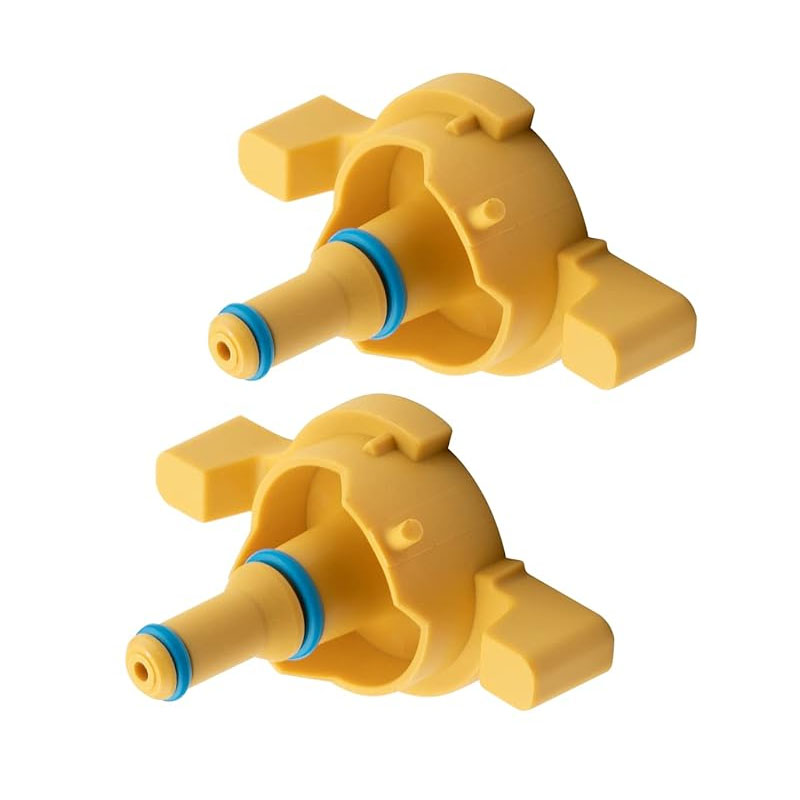Understanding the Importance of Rear End Yoke Seals in Vehicle Performance and Maintenance
Understanding Rear End Yoke Seal Importance and Maintenance
The rear end yoke seal, often overlooked during regular vehicle maintenance, plays a crucial role in the performance and longevity of a vehicle’s drivetrain. Understanding its function, signs of wear, and how to maintain it can save car owners from costly repairs and ensure a smooth driving experience.
What is a Rear End Yoke Seal?
The rear end yoke seal, also known as the pinion seal, is a crucial component located at the rear differential of a vehicle. Its primary function is to prevent differential fluid from leaking out of the housing where the drive shaft enters the differential. This seal is designed to handle high pressure and varying temperatures, making it essential for the efficient operation of the vehicle's rear axle.
Importance of the Rear End Yoke Seal
The integrity of the rear end yoke seal is vital for several reasons
1. Fluid Retention The seal prevents the expensive and critical differential fluid from leaking out. This fluid lubricates the gears and ensures proper functioning, so any loss can lead to severe damage.
2. Contamination Prevention A properly functioning seal keeps dirt, debris, and moisture out of the differential. Contaminants can lead to wear and tear on the gears and bearings, ultimately resulting in significant mechanical failure.
3. Performance and Efficiency A leaky yoke seal can lead to decreased performance as the differential won't operate efficiently. Drivers might notice strange noises, vibrations, or even slipping in the drivetrain.
Signs of a Failing Yoke Seal
rear end yoke seal

Recognizing the signs of a failing rear end yoke seal is crucial for timely maintenance. Some common indicators include
- Fluid Leaks The most obvious sign of a failing seal is the presence of differential fluid leaks around the area where the drive shaft connects to the differential. Fluid spots on the driveway or garage floor can signify a more extensive issue.
- Unusual Noises If there is a grinding or whining noise coming from the rear of the vehicle, this might indicate low differential fluid levels due to a leaking seal.
- Vibrations Increased vibrations during acceleration can signal a loose or failing yoke seal. This can lead to other issues if not promptly addressed.
Maintenance and Replacement
Maintaining a rear end yoke seal primarily involves periodic inspections during routine vehicle maintenance. Technicians should check for signs of wear or leakage and ensure the seal is in good condition. If leaks are found, it is advisable to replace the seal immediately to prevent damage to the differential.
Replacing a rear end yoke seal involves draining the differential fluid, removing the drive shaft, replacing the seal, and then reassembling everything. It is advisable to have this performed by a professional mechanic, as improper installation can lead to further issues.
Conclusion
In summary, the rear end yoke seal may be a small component, but it serves a vital role in maintaining the overall health of a vehicle's drivetrain. Regular inspection and maintenance can prevent leaks and ensure that the differential functions smoothly. Vehicle owners should not underestimate the importance of this seal, as neglecting it can lead to costly repairs and reduced vehicle performance. Regular check-ups and being attentive to signs of wear can ensure a safe and efficient driving experience.
-
Understanding the Importance of the Crankshaft Oil Seal in Engine Performance
News Jun.16,2025
-
The Unsung Heroes of Engine Protection: Understanding Automotive Shaft Seals and Oil Seals
News Jun.16,2025
-
Keeping the Engine Tight: The Role of Crankshaft Seals and Gaskets in Oil Control
News Jun.16,2025
-
Complete Protection in Harsh Conditions: A Deep Dive into Cassette Seals
News Jun.16,2025
-
Choosing the Right Oil Seal: A Guide to Trusted Brands and Suppliers
News Jun.16,2025
-
Advanced Sealing Technologies: Exploring the Range of Modern Oil Seals
News Jun.16,2025
-
Your Essential Guide to Car Repair Kits: From Rust to Dings
News Jun.13,2025
Products categories















